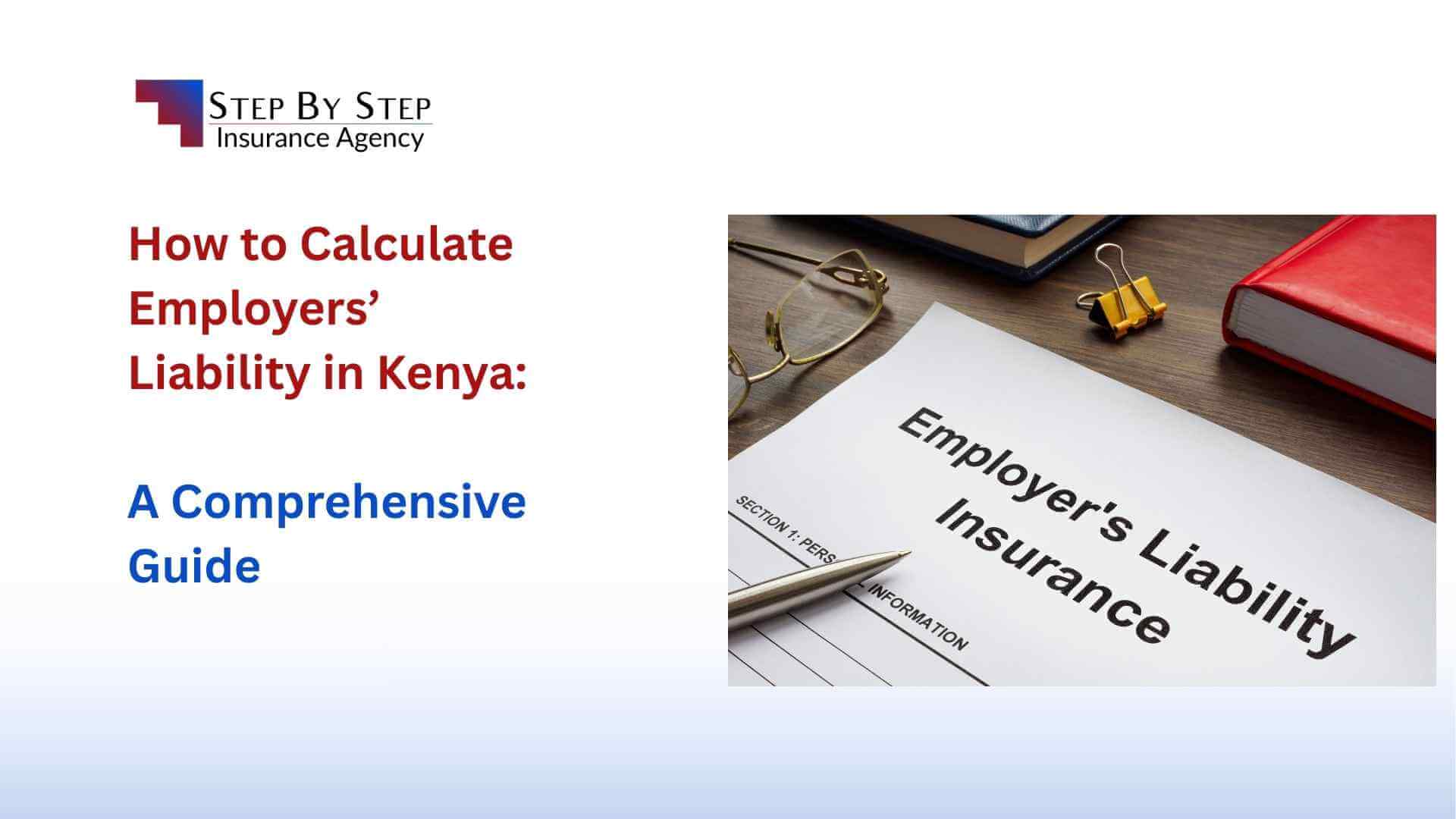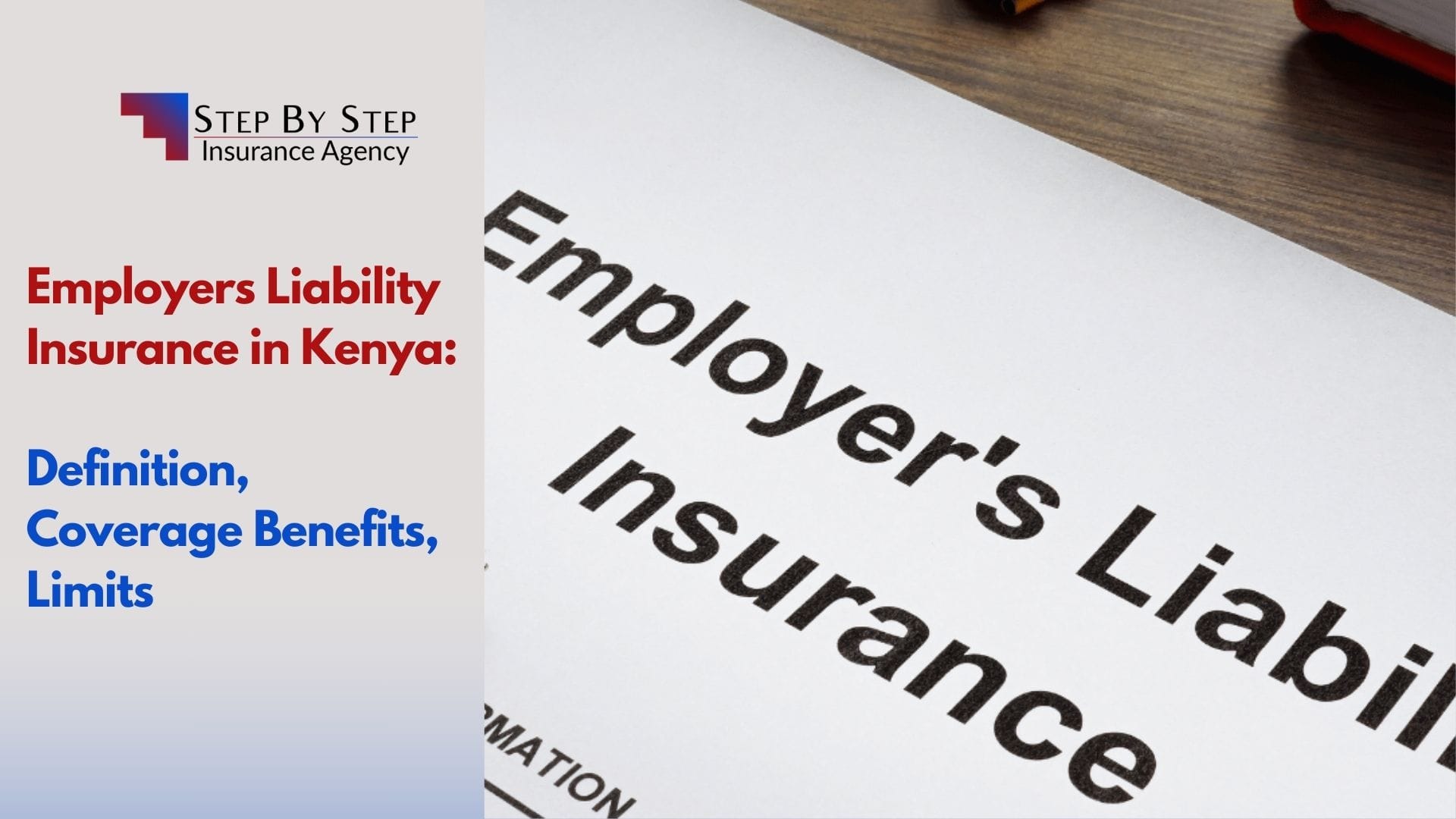How to Calculate Employers’ Liability in Kenya: A Comprehensive Guide
Employers’ liability in Kenya refers to the legal and financial responsibility an employer holds toward employees who suffer work-related injuries, illnesses, or death. Calculating this liability accurately is essential for compliance with Kenyan labor laws, ensuring fair compensation, and determining the correct insurance coverage and premium costs.
This guide explains the framework for calculating employers’ liability in Kenya, including statutory compensation under the Work Injury Benefits Act (WIBA), common law negligence claims, and factors influencing employers’ liability insurance calculations.
🔑 Key Takeaways
- WIBA provides structured compensation formulas for workplace injuries
- Permanent total disability compensation equals 60 months’ pay at 75% of monthly earnings
- Insurance premiums are calculated based on payroll size, industry risk, and claims history
- Common law claims require case-by-case assessment beyond WIBA schedules
- Accurate wage reporting is crucial for proper liability calculation
📚 Table of Contents
🚀 Join Our Insurance Community
Stay updated with the latest insurance trends, legal changes, and expert insights! Connect with fellow professionals, employers, and HR experts in our exclusive WhatsApp community.
💬Join WhatsApp Group⚖️ Legal Framework for Employers’ Liability Calculation in Kenya
Work Injury Benefits Act (WIBA) 2007 is the principal statute setting out the basis and method for calculating statutory compensation due to employees who suffer workplace injuries or occupational diseases. It specifies the benefits payable depending on the nature and severity of injury, medical costs, loss of income, and death benefits.
Outside WIBA, liability may arise under common law when an employee sues for damages due to employer negligence, and this involves calculating damages based on losses incurred, medical expenses, pain and suffering, and legal costs.
Employers’ liability insurance policies in Kenya also use these parameters for premium and claim calculations, based on risk exposure and expected claim amounts.
📊 Calculating Statutory Employers’ Liability under WIBA
WIBA provides detailed schedules for compensation calculation:
Types of Compensation
- Temporary Total Disability: Compensation equals 75% of the employee’s monthly earnings until full recovery or permanent disablement.
- Permanent Total Disability: Lump sum compensation equal to 60 months’ pay at 75% of monthly earnings.
- Permanent Partial Disability: Compensation proportionate to the degree of disability, based on a specific schedule of body parts and corresponding percentages of the lump sum for total disability.
- Medical Expenses: Full coverage of reasonable medical costs related to the injury.
- Death Benefits: Compensation to dependents calculated as 60 months’ pay at 75% of monthly earnings, plus funeral expenses.
Wage Definition
WIBA defines “monthly earnings” to include basic wages, contractual allowances, and regular bonuses.
Compensation = 60 × 0.75 × Monthly Pay
Example: If an employee earns KSh 40,000 per month:
Hence, the lump sum payable would be KSh 1,800,000.
🏛️ Calculating Employers’ Liability for Common Law Claims
For claims under common law, damages may cover:
- Medical expenses (past and future)
- Loss of earnings and loss of future earning capacity
- Pain, suffering, and emotional distress
- Legal costs (both claimant and defense)
- Funeral and dependency claims
Calculation involves detailed assessment by legal and medical experts to quantify:
- The extent and permanency of injuries
- The economic impact of lost work
- Non-economic damages for pain and suffering
There is no fixed formula as in WIBA, but courts often refer to precedents and expert reports. Employers and insurers use actuarial and risk data to estimate potential liabilities.
💰 Employers’ Liability Insurance Premium Calculations
Insurance companies calculate premiums based on:
- Payroll Size: The total wages paid to employees; higher payroll means greater risk
- Industry Risk: Some industries (construction, manufacturing) have higher injury risks
- Claims History: Past claims frequency and severity affect premiums
- Coverage Limits: Higher coverage limits demand higher premiums
- Employee Count: Number of employees covered
Premium is commonly expressed as a percentage of the total payroll. For example, a 1% rate on a payroll of KSh 10,000,000 means an annual premium of KSh 100,000.
💡 Key Considerations for Employers
- Accurate Wage Reporting: Ensure gross monthly wages include all relevant allowances to avoid undercompensation
- Understand Injury Categories: Apply correct compensation schedules per WIBA for various injury types
- Timely Claims Notification: Enables proper insurance claim processing and cost management
- Consider Extra Coverage: For claims outside WIBA scope (e.g., negligence suits), purchase additional liability insurance
- Keep Updated: Changes in law, industry risks, or payroll affect calculations annually
📝 Practical Example: Calculating Employer’s Liability under WIBA
Suppose an employee earning KSh 50,000 per month suffers permanent partial disability assessed at 30% loss of earning capacity:
Step 1: Calculate Full Disability Lump Sum
60 × 0.75 × 50,000 = 2,250,000 KSh
Step 2: Calculate Partial Disability Compensation
0.30 × 2,250,000 = 675,000 KSh
Thus, the employer (or insurer) pays KSh 675,000 as compensation.
| Service | Description | Action |
|---|---|---|
| Get Insurance Quote | Personalized employers’ liability insurance quotes | 📋Get Quote |
| Expert Consultation | Professional advice on liability calculations | 📞Contact Us |
| Insurance Guide | Comprehensive employers’ liability information | 📖Learn More |
📋 Summary of Calculation Components
| Component | Method/Formula | Notes |
|---|---|---|
| Temporary Total Disability | 75% of monthly pay until recovery | Periodic payments |
| Permanent Total Disability | 60 x 75% x monthly pay | Lump sum payment |
| Permanent Partial Disability | % disability x (60 x 75% x monthly pay) | Lump sum proportional to disability degree |
| Death Benefits | 60 x 75% x monthly pay + funeral expenses | Paid to dependents |
| Medical Expenses | Actual reasonable costs | Costs covered in full |
| Common Law Damages | Assessed based on loss, pain, suffering, legal costs | No fixed formula; case-by-case assessment |
| Insurance Premium | Payroll x industry risk rate (%) | Varies by insurer, industry, and risk factors |
📞 Need Professional Assistance?
Our experienced team can help you calculate your employers’ liability and find the right insurance coverage for your business.
✅ Conclusion
Calculating employers’ liability in Kenya requires adherence to statutory rules under WIBA for work injury compensation and consideration of additional exposure through common law claims. Employers must accurately calculate monthly wages, assess the injury or disability type, and apply WIBA schedules to determine compensation. Adequate insurance coverage must be purchased based on payroll size, industry risk, and claims history.
Employers and HR professionals should regularly review their payroll and safety practices and partner with legal and insurance experts to properly calculate liability and maintain compliance. Get a personalized quote today to ensure your business is adequately protected.






